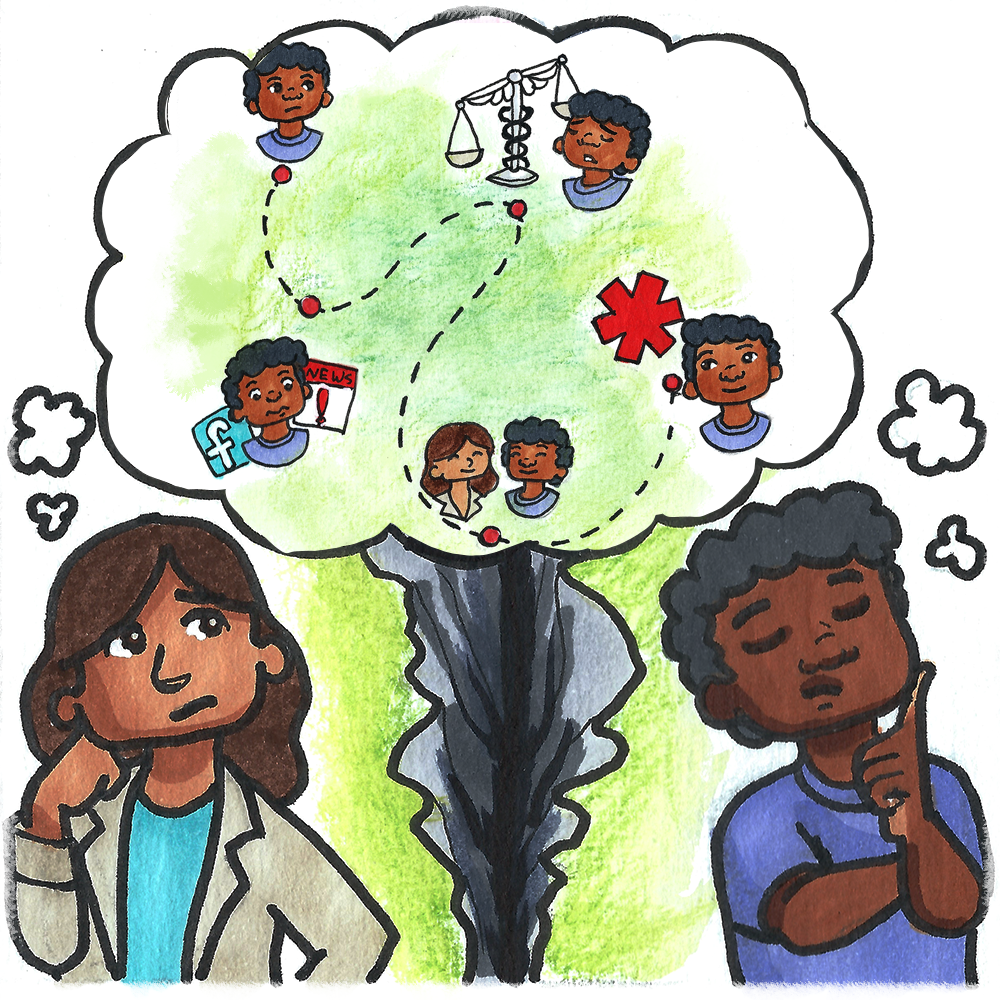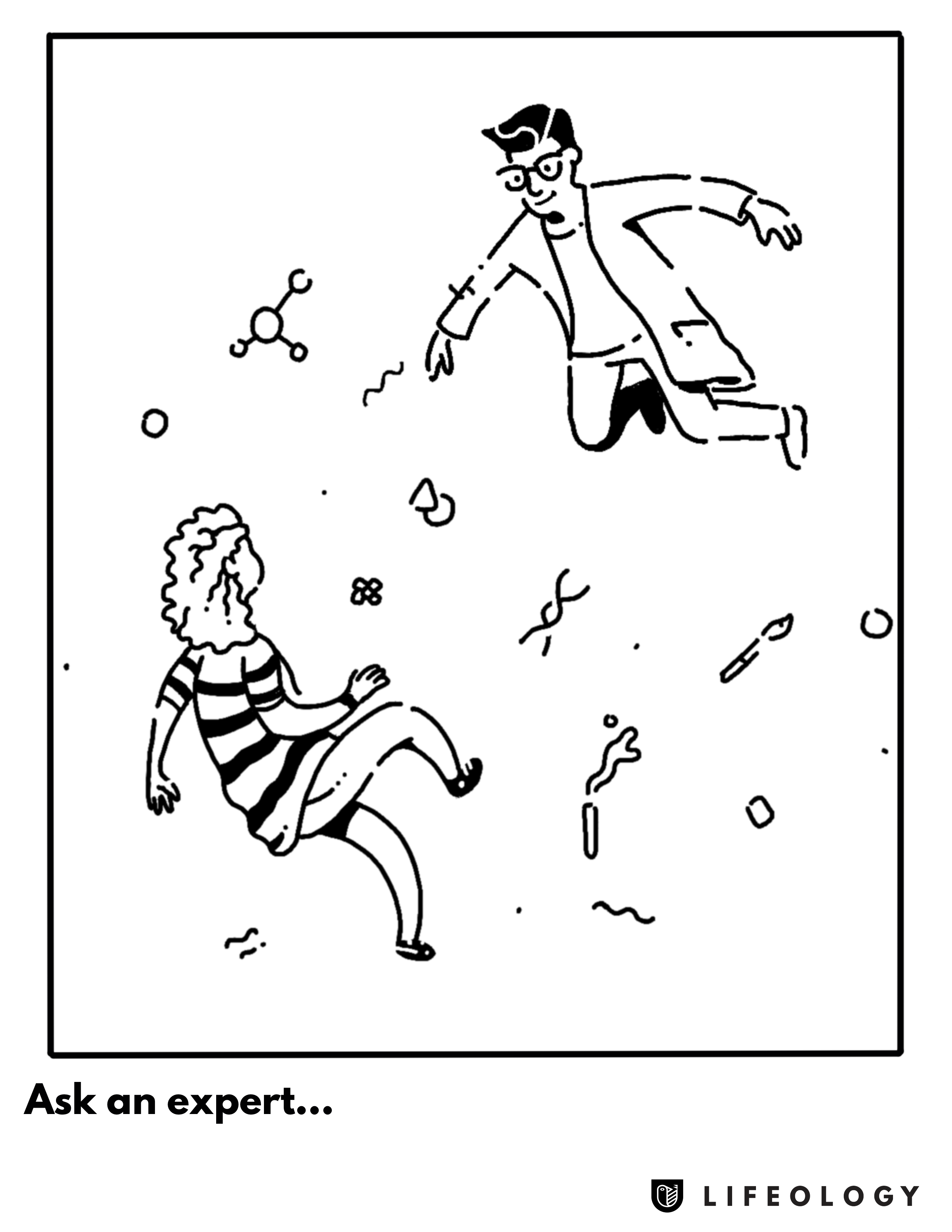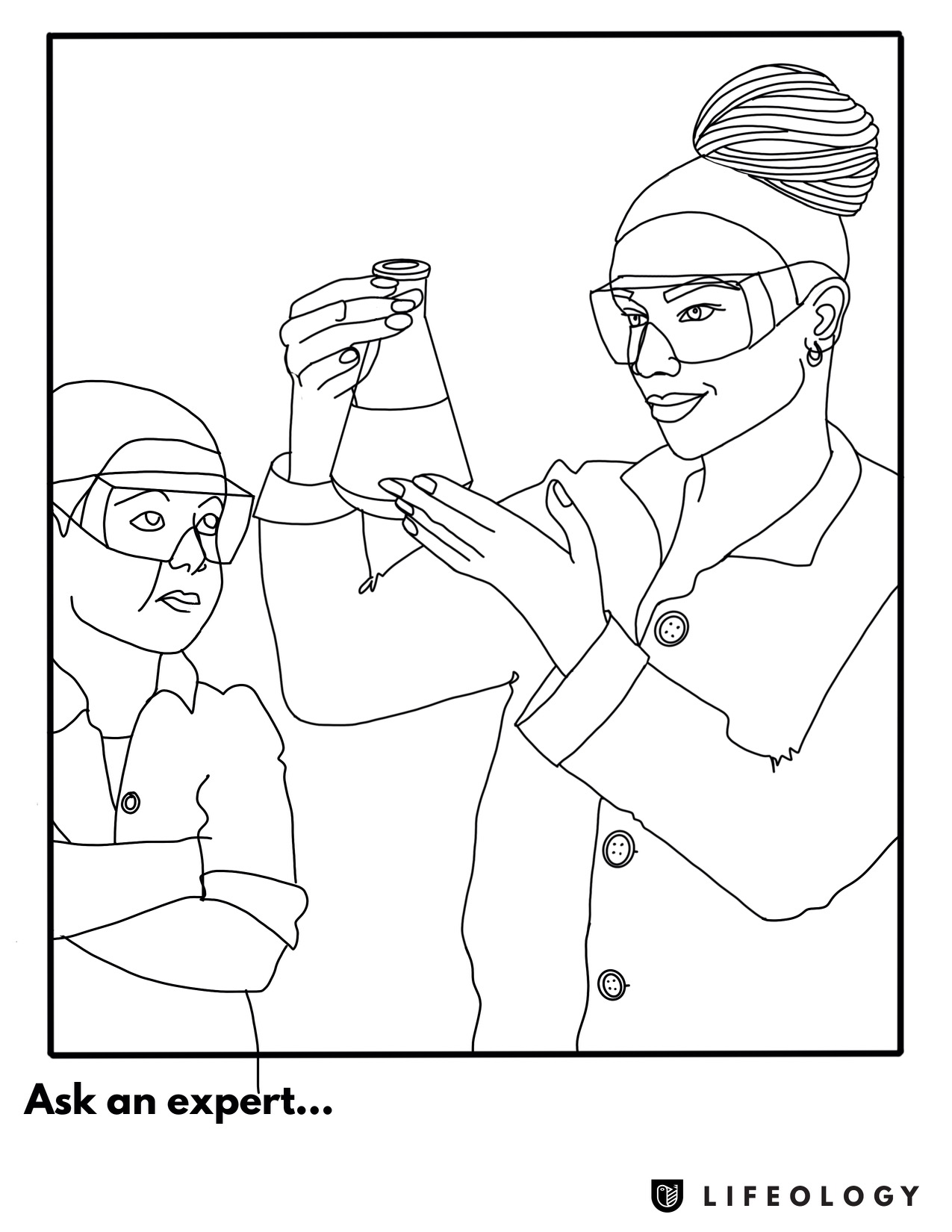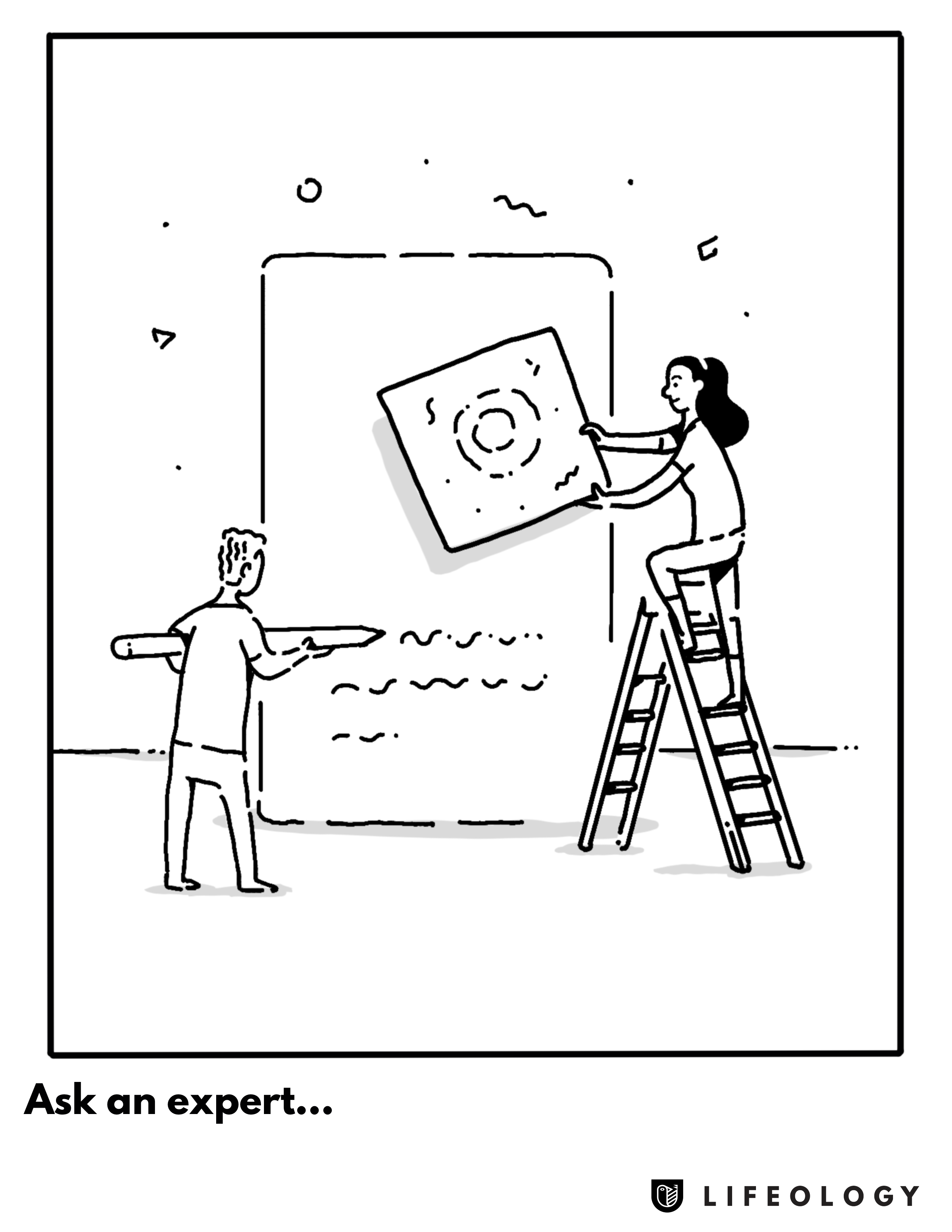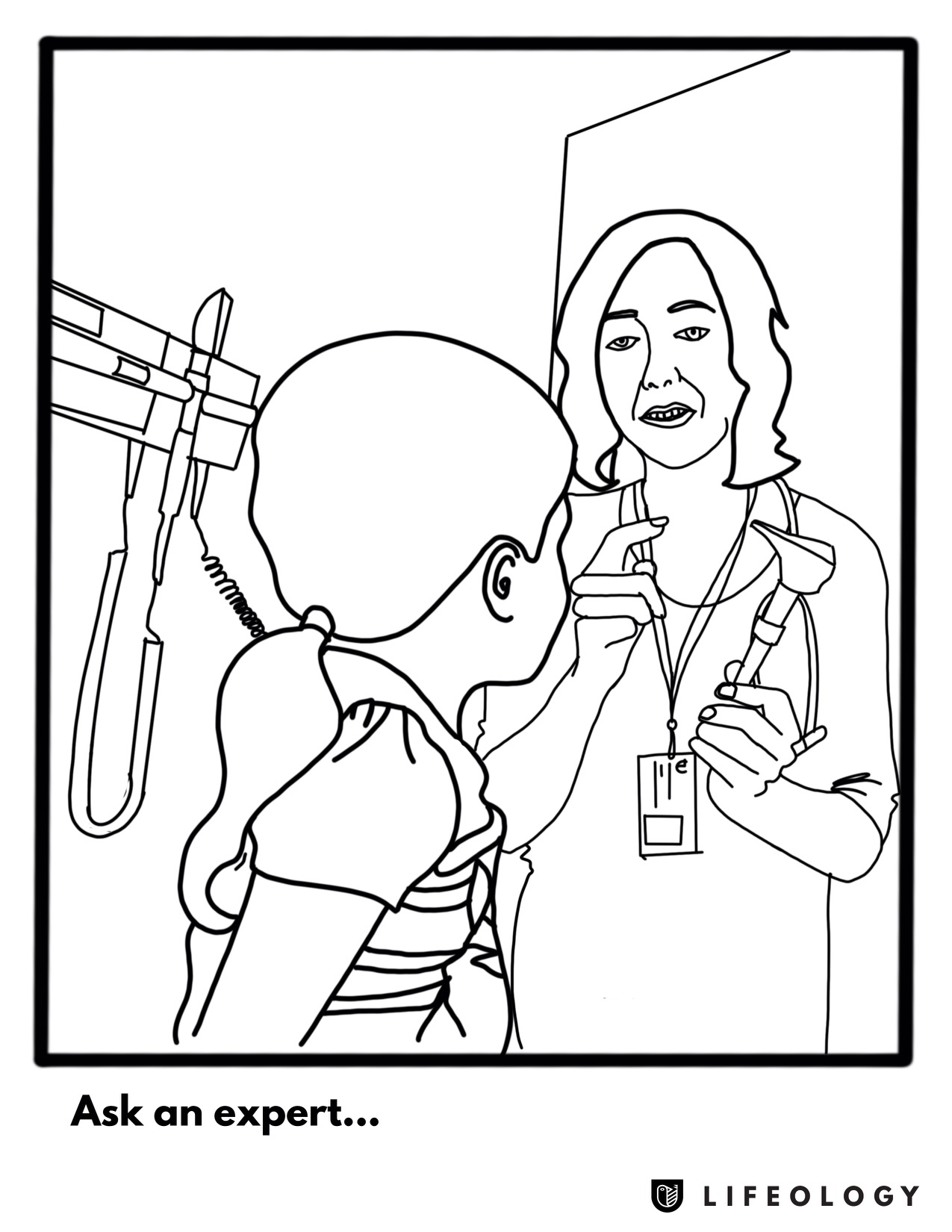
The Health Trust Gap and How to Fix It
🎉
As Featured in the SXSW 2021 Panel
The Health Trust Gap can be represented by the distance that has grown between health professionals, researchers and clinicians, and the general public. This trust gap has many causes, including historical trauma experienced by minority groups and vulnerable populations at the hands of researchers and governmental institutions. It also has roots in how siloed scientific and health data and information are today. Most people do not have access to trustworthy scientific and health information in a form they can understand and act upon. During the COVID-19 pandemic, we’ve also seen a division in how people respond to the data and information that is available, a division rooted in political polarization, mistrust, fear and more.
How can we all use effective communication to bridge this gap? It starts with building trust, which starts with building relationships and finding common ground… through storytelling!
We organized a panel of experts from various fields to talk about the Health Trust Gap and how to fix it in a virtual SXSW 2021 event. Our experts included:

Natalia Peart, PhD
Founder/CEO
Catalyst Innovation Group

Ed Simcox
Chief Strategy Officer/Former Chief Technology Officer
LifeOmic/Department of Health and Human Services

Kristen Bell
Actress and Business Owner
Hello Bello
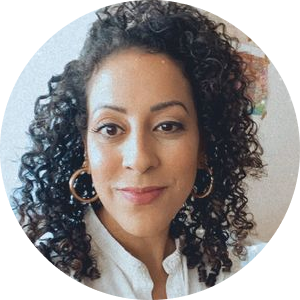
Jessica Malaty Rivera
Science Communication Lead
The COVID Tracking Project, at The Atlantic
Practice
Building Trust in Science and Research!
You can build trust in science and research with your own audiences by applying lessons from social scientists who study trust and science communication! One of these lessons is to tell a story. Good storytelling helps people to go on a journey with you, instead of feeling like you are talking at them. Stories are a building block for trust.
Apply research and practice from the fields of science communication and psychology to build trust in science and health among your own audiences! Get started with our illustrated flashcard course.
For Kids (and Adults)
It’s okay to not know all the answers. When you don’t know, ask someone who is an expert at that topic or in that field!
To practice saying “I don’t know” and to teach young people to do the same, download and print one of our Ask an Expert coloring sheets created by the Lifeology community (or create your own!). This activity is a great way to start the conversation with kids on having a growth mindset and being open to learning something new.
Glossary
Agency is the ”capacity of individuals to act independently and to make their own free choices.” Feelings of agency can be likened to feelings of control over one’s situation or actions. Agency is an important concept in our health and well-being.
The AMA, or Ask Me Anything, is a few communication tool that puts your audience first and gives them control over the conversation, which helps to build trust. The AMA is also an emerging form of public engagement with science.
An anecdote is an account or story of an individual person, event or incident. Anecdotes can be powerful tools for storytelling and behavior change. But they are also limited in terms of what they can tell us about larger trends, which is where they can get us into trouble. Scientists don’t use data from individual people or incidents to make conclusions about cause and effect, such as whether a vaccine actually works or what its side effects are. Rather the scientific method makes them systematically collect data or conduct experiments, and consider all the resulting data points without bias.
Clinical trials are “research studies performed in people that are aimed at evaluating a medical, surgical, or behavioral intervention. They are the primary way that researchers find out if a new treatment, like a new drug or diet or medical device (for example, a pacemaker) is safe and effective in people” (Source: NIH). Learn more from our Lifeology course about clinical trials.
Dialogue is back and forth conversation, for example between citizens and scientists. A dialogue-based model of science communication values two-way communication and input from citizens into the scientific process of asking questions, designing experiments and applying findings.
One way to look at the health trust gap, according to Jessica Malaty Rivera, is to look at the distance that has grown between health professionals, researchers and clinicians, and the general public.
At its core, human-centered design is about empathy, or seeing problems through the eyes of those involved (audiences, stakeholders, etc.)
Fact-checking or verification involves verifying that some piece of reported information is true and based on credible data and accurate information. It might involve going back to the original data, asking experts in relevant fields, comparing reports across multiple news sources, and checking someone’s sources of information. Find tips on fact-checking here.
Nuance is critical in science communication. Communicating the nuance of science involves putting new research or findings in the context of what is already known, and also talking about the limitations of new research findings – What do we still not know? How do these results compare to results of other studies or research? What findings or data are we not fully confident about, because they may not be reproducible or might not generalize to a broader population?
The birth control pill as we know it today would not have been possible without a drug trial on Puerto Rican women in the 1950-60s. However, this demographic was targeted based on racial biases from the physicians involved. These poorer Puerto Rican women were not told it was a new drug, information about the product, potential side effects or that they were part of a clinical trial. Some women experienced serious health side effects and even death from participating.
Good science and research is reproducible, which means that anyone else can collect new data based on the protocols originally described and come out with the same results. To create science that is reproducible, we have to be transparent and precise in describing methods and procedures. We also need to be performing the correct statistical tests and working with “good” data that is trustworthy because it reflects the reality of things.
A story has a plot, characters and conflict. But it is also more than that. A story is ultimately “how what happens affects someone who is trying to achieve what turns out to be a difficult goal, and how he or she changes as a result. […] “how he or she changes” is what the story itself is actually about.” – Lisa Cron, in Wired for Story
The Deficit Model assumes that “ignorance is the basis of a lack of societal support for various issues in science and technology” (via The lure of rationality: Why does the deficit model persist in science communication?).
If you can tell a gripping enough story, Kristen Bell says, if you can grip your audience, they pause their conclusions and they go on the ride with you. This is why good storytelling is so important. “If you can get people to get on that roller coaster with you, they aren’t thinking about the conclusion. They’re letting you take them there.” This is a concept of story transportation, or the idea that people can “lose” themselves in a story.
Trust and trustworthiness have two major dimensions – competence and warmth. Competence is about how well you think someone can do their job or achieve their goals. Scientists are generally respected as being very competent. Warmth is about whether you think someone shares your values and has your best interests at heart; about whether they are friendly, moral and ethical. Warmth turns out to be more important for trust and trustworthiness than competence is. This is why relationship building, storytelling and friendliness are so important to being a trustworthy scientist or communicator.
The Tuskegee Experiment, or Syphilis Experiment, was an experiment the government conducted for 40 years on Black men, and the goal of the study was to study the course of untreated syphilis… but the men who participated in the study did not know this. They were promised free medical care. They were deceived. The experiment only ended after 40 years because of a leak. It was the cause of lots of deaths, and the cause of huge mistrust.
Additional Resources
- Bridging the Trust Gap (Link)
- The Baby In The Well – The Case Against Empathy (Link)
- The World Needs More Purple People (Link)
- How to Plan a Successful Ask Me Experience (Link)
- How To Use Storytelling To Captivate Any Audience (Link)
- How to Use The Power of Storytelling to Connect With Your Audience (Link)
- An emerging form of public engagement with science: Ask Me Anything (AMA) sessions on Reddit r/science (Link). Excerpt: “Originally, communicating about science with the general public was largely one-directional – from experts to the general public via news media. Recently, the term Public Engagement with Science (PES) has become more widely used to emphasize active engagement with the public through public participation.”
- Human-Centered Design Resources and Methods To Help You Master HCD (Link)
- Ideo Design Kit and the Field Guide to Human-Centered Design (Link)
- Disclose your flaws! Admission positively affects the perceived trustworthiness of an expert science blogger (Link)
- Two-sided science: Communicating scientific uncertainty increases trust in scientists and donation intention by decreasing attribution of communicator bias (Link)
- Trust and Mistrust in Americans’ Views of Scientific Experts (Link)
